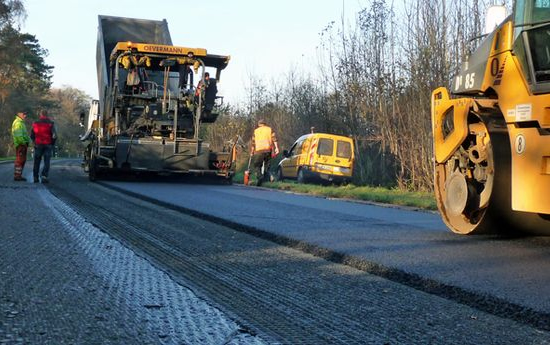Asphalt interlayer technologies have contributed substantially to extending pavement service lives and reducing project costs and installation maintenance needs. To further the dialogue on these materials and applications, the Asphalt Interlayer Association has released a series of succinct, highly accessible, and informative videos.
ASPHALT INTERLAYER ASSOCIATION LEADS THE WAY
In the first of the three videos posted to YouTube, AIA Executive Director Ray Myers outlines the basic technologies and how they achieve key performance goals outlined by the US Federal Highway Administration (FHWA), such as smoothness and rideability. These low-cost, surface maintenance treatments reduce both road and vehicle maintenance needs.
Myers and the Asphalt Interlayer Association propose three approaches to enhancing roadway smoothness and longevity:
- High-Speed Inertial Profiling (HSIP)
- Micro-Milling
- Geosynthetic Reinforced Chip Seal
RELATED: Interview with Dr. Rajib Mallick on Geosynthetic-Reinforced Chip Seal
Utilizing these approaches, Myers notes, leads to a smooth road, completely seals the road, and provides a waterproofing membrane. The subsequent dry aggregate has greater load-bearing strength.
“We are recommending a surface maintenance treatment that has over 25 years of successful crack reflection mitigation,” Myers says. “We also create a reduced heat island and reduce the underlying temperature of the asphalt pavement itself. A definite reduction in the use of natural resources will occur with this process. … All of this should be accomplished with much less cost than the process you might be using, such as an overlay or a mill and fill.”
Myers goes on to provide a history of paving interlayers, including the introduction of paving fabrics, paving mats, and paving grids, and their general benefits.

ASPHALT INTERLAYER ASSOCIATION ROLE
The Asphalt Interlayer Association focuses on the dissemination of information on the differences between the various interlayer options, their respective benefits, proper selection, and proper installation.
In a March 2017 article on Geosynthetica, AIA wrote:
The pavement maintenance industry has seen a broad range of changes, such as adding warm mix asphalt, rubberized asphalt, a greater use of milling, and new installation methods for interlayers. The GRCS (Geosynthetic Reinforced Chip Seal, or chip seal over fabric) may not be known by many but has proven to be a system mitigating crack reflection and waterproofing that exceeds any other pavement maintenance system.
The new series of videos will help transfer the information further. As Myers noted in the initial 6:16 video, the subsequent videos are significantly detailed. Video 2 clocks in at 26:44 and focuses on Geosynthetic Reinforced Chip Seal. Video 3 provides just under 20 minutes of detail on focuses on High-Speed Inertial Profiling.
Learn more about the Asphalt Interlayer Association, its members, and its initiatives at www.aia-us.org. The video series is available here.
MORE ASHPALT INTERLAYER STORIES ON GEOSYNTHETICA
- Tack Film Improves Bond between Fiberglass Geogrid and Asphalt
- Halting Reflective Cracking: Machina Adds to Roadway Geosynthetics Line
- Installation of Asphalt Interlayers at High Ambient/Pavement Temperatures
- VIDEO: Asphalt Pavement Interlayers
- Airport Runway Redesign with Geosynthetic Reinforcement











